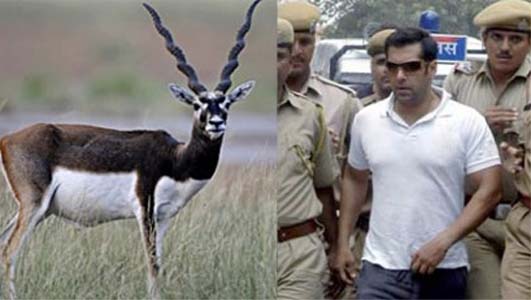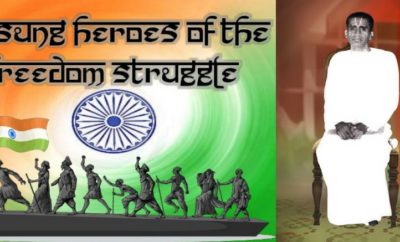
Bollywood
How a DNA expert’s crucial evidence helped nail Salman Khan
The crucial evidence of a DNA fingerprinting expert from Hyderabad, who conducted wildlife forensic tests on the samples of a blackbuck sent to a Hyderabad lab — the Centre for DNA fingerprinting and Diagnostics (CDFD) — helped the prosecution nail actor Salman Khan.
The evidence provided by GV Rao, who is now an ex-staffer of CDFD, was crucial in the case.
Earlier today, a Jodhpur court convicted Salman Khan in the blackbuck poaching case and sentenced him to five years in prison. The actor’s bail plea hearing is scheduled for tomorrow.
Rao had deposed in December 2015 in the court when he was then chief staff scientist of CDFD’s DNA fingerprinting lab. His team had used specially developed markers in 1999 to identify the species of blackbuck.
Speaking to TOI after the judgment, Rao said, ”In October 1998 the incident took place. The investigating officer and the then assistant conservator of forests of Jodhpur, Lalit K Bora, conducted a careful investigation. He exhumed the bones and skin after the blackbuck was buried. When he sent us a requisition, we told him we would try to establish the identity of the species. During that time, wildlife forensics, particularly DNA identification, was in a nascent stage. Officials did not want a vague report that said the species belong to antelopes. With the newly-developed markers and methodology, we were able to identify the species and could establish that the bones and skin belonged to the animal,” he said.
He added, ”When I deposed in December 2015 in court, I explained how we developed the methodology and how the test was conducted to identify the species. In the cross-examination too I was able to explain the authenticity of the test and results. I am happy that at last the court has convicted Salman Khan.”
Rao lives in Alwal in Hyderabad and is now into civic activism. He was also associated with the forensic investigation of other sensational cases such as the killing of tigress Sakhi at the Hyderabad Zoo.
“I am happy about the judgement as it reinforces faith in the judiciary even though the accused is so powerful,” Rao remarked.
Since 2001, the Hyderabad-based Centre for Cellular and Molecular Biology’s Laboratory for Conservation of Endangered Species (LaCones) has been involved in wildlife forensics in connection with such cases.
LaCones senior principal scientist Karthikeyan Vasudevan told TOI, ”We have done DNA fingerprinting in around 3,000 cases of wildlife poaching and smuggling and identified the species and helped investigators. Tadoba tiger poaching is one of the major cases. In 1998 CCMB scientists developed Universal Markers that are being used for various species.”





0 comments